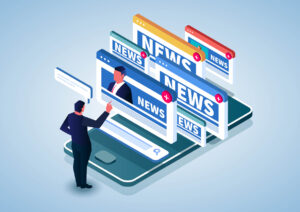4 tips for making a shy CEO media ready
The comms team must serve as an advocate for the executive even if that means being brutally honest.

Being a brilliant business leader doesn’t guarantee you’ll be a great public speaker. In fact, it’s sometimes the opposite.
Many executives, despite being experts in their field, come across as stiff, long-winded or disengaged when speaking to a general audience or a reporter. This is because they’re used to speaking to their boards or employees, not the public, said Steve Atkinson, VP of executive media engagement at Spectrum Science.
“You can have the most groundbreaking technology in the world, but if you don’t know how to share information about it in an engaging way and in the right format, it will fall flat,” Atkinson said.
Atkinson said PR teams can help their C-suite executives become better at interviews by giving them these tools to steer the conversation.
- Ditch the talking points
When Atkinson preps someone for an interview, he usually offers straightforward talking points that his clients can use to answer questions. However, he’s not a fan of scripted content.
There are times when it’s necessary, like when dealing with a legal issue or reciting a list of specific details, he noted. But Atkinson tries to move his clients away from prepared remarks as soon as possible, since they can become a “crutch” and lead to rehearsed comments.
“I want to hear them speak naturally, without relying on the notes,” he said. “Once they’re comfortable without the notes, it’s amazing. They stop worrying about the script and just focus on speaking.”
This helps them feel more comfortable and focus on improving other areas, such as body language and making eye contact.
“By the time of the interview, it should really start to feel like they’re having a conversation with a friend over dinner,” he said.
- Build a trusting relationship
Atkinson said that trust is at the heart of the media training process. He uses these sessions to learn about his client just as much as he does to prepare them for the interview.
“If I know that person is shy, if I know they’re outgoing, if I know they’re long-winded, I want to be able to know them and what their knowledge base is and really what their personality is,” he said. “When I get that, then I can better understand what I’m working with and how I can pull their personality out of them.”
Knowing strengths and weaknesses will also guide how he develops his training approach. The talking points may need to be longer for some or more concise for others. When people are nervous, they often respond either by talking too much or saying very little, Atkinson said.
For instance, if it’s a 6-minute video interview at a conference, he prepares his executive team to expect four to five questions. The aim is to keep each response to 45 seconds or less, depending on the question’s complexity. That may turn into a question or two if they’re too wordy. So, Atkinson really focuses on answering questions repeatedly, so they feel more confident in keeping things tight.
Atkinson reviews their responses, coaches them on adjustments, and has them try again until their answers sound conversational, clear and engaging. He also asks that they record themselves doing practice questions and share their recordings with him.
They’ll go over the recordings together, but Atkinson said most of his clients start to “figure things out” when they play them back for themselves.
- Give real, substantive feedback
The key to success lies in being direct and honest with the interviewee about what you need from them and how they can improve their performance. Atkinson admits this can be tough but it’s crucial.
Of course, he doesn’t recommend going up to the CEO and telling them their performance stunk. Instead, try the “criticism sandwich” – start with a positive about their performance, saying something they did well followed by something they need to work on. Then, finish with another confidence-building compliment like, “I know you can get there because you’re doing this and that correctly,” Atkinson said.
“You can’t be afraid to speak up,” he added. “You’re only going to harm yourself and the person you’re trying to help if you’re not being honest.”
- Train regularly
Media training shouldn’t be a one-off event that takes place right before a meeting. It needs to happen regularly to make sure they’re comfortable and ready for even surprise interviews.
Atkinson is an advocate of taking as much time as possible to conduct media training with a leader, even if it’s peppering them with a few random questions at the end of a scheduled meeting to keep them on their toes. Adding training to the last five minutes of another meeting is better than nothing, but he doesn’t think that’s the best approach. He’d prefer to find a regular 15 to 30 minutes once a month to keep skills fresh.
If able, reach out to the leadership teams’ schedulers and try to set up something reoccurring. To make it more worthwhile, bring recent media clip examples and consider a relevant topic or theme for the meeting to make it more of the moment.
Getting those meetings on the book can be a challenge, Atkinson admitted. “People are busy, especially at the C-suite level.”
If he can’t get on the exec’s calendar, Atkinson will share examples of media fails that highlight the importance of preparation.
Atkinson uses those during media workshops and shares them with clients. He said he has noticed people become physically “awkward” after watching them and then reach out for training or use it to convince the leadership team to consider it.
“This is about building their confidence to make sure they’re ready whenever they’re needed,” Atkinson said.
Casey Weldon is a reporter for PR Daily. Follow him on LinkedIn.







